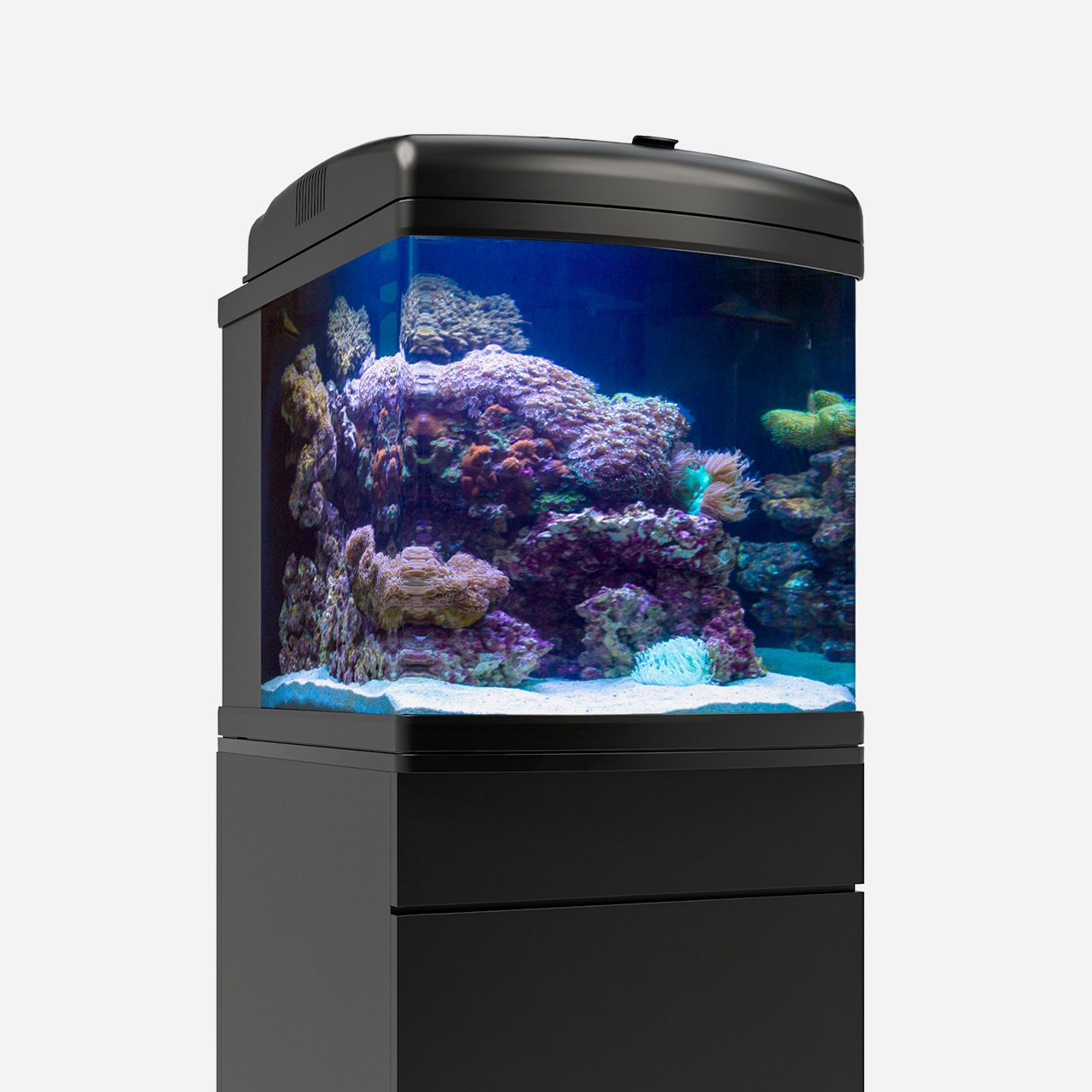The Ultimate Aquarium Buyers Guide
Picking the perfect aquarium is like choosing a new home for your finned friends - it's gotta be just right! Go big if you can, because more water equals happier fish and easier care. Are you a newbie? Dive into the freshwater world where the vibes are chill and the maintenance is breezy. Glass or acrylic? Glass brings the classic look, but acrylic’s the lightweight champ (watch out for scratches, though!). Location, location, location - keep it cool, keep it stable, and make sure it’s a spot where you can enjoy the underwater show.
Choosing your aquarium is the first splash into the exciting pool of fishkeeping, so make it count and have fun with it!
For Beginners: Starting Your Aquarium Journey
-
1a. Size Matters:
- Small Tanks (5-20 gallons): Ideal for beginners due to their affordability and ease of placement. However, smaller tanks require more frequent water changes and monitoring due to the rapid changes in water parameters.
- Recommendation: Start with a 20-gallon tank to balance manageability and ecological stability
-
1b. Opt for the Largest Aquarium You Can Manage:
- Why Bigger is Better: Larger tanks dilute toxins more effectively, offering a more forgiving environment for beginners by accommodating minor maintenance lapses.
- Practical Advice: Aim for at least a 15-gallon tank as your starting point to provide a stable environment for your fish and easier care on your part.
-
2. Freshwater vs. Saltwater:
- Freshwater: Easier to maintain and a great starting point for beginners. Offers a wide variety of fish and plants that are hardier and more forgiving to the occasional lapse in tank maintenance.
- Saltwater: More complex and requires a deeper understanding of water chemistry. It offers more vibrant and diverse marine life but at a higher cost and maintenance level.
- Recommendation: Begin with a freshwater tank.
-
3. Essential Equipment:
- Filter: Crucial for maintaining water quality. Options include hang-on-back (HOB), canister, and sponge filters.
- Heater: Necessary for tropical fish; aim for a reliable, adjustable heater.
- Lighting: LED lights are energy-efficient and can support plant life if you decide to include live plants.
- Test Kits: Vital for monitoring ammonia, nitrite, nitrate, and pH levels.
- Recommendation: Invest in quality equipment to avoid frequent replacements and ensure a stable environment for your fish.
-
4. Fish Selection:
- Choose hardy species that are forgiving of water condition fluctuations, such as bettas, guppies, tetras, and danios.
- Avoid overstocking; a general rule is 1 inch of fish per gallon of water, considering adult sizes.
-
5. Maintenance Basics:
- DON'T USE TAP WATER RIGHT AWAY! Use a water conditioner before you place your fish.
- Regular water changes (20-25% weekly) to remove toxins.
- Test water parameters weekly to catch and rectify issues early.
- Feed fish appropriately; overfeeding leads to water quality issues.

JBJ Aquariums
28 G NANO CUBE WIFI







Advanced Aquarists: The Deep Dive
-
1. Larger and Specialty Tanks:
- Larger Tanks: Greater volume offers more stability and options for stocking and aquascaping.
- Specialty Tanks: Reef tanks, planted tanks, and biotope aquariums require specific knowledge but are rewarding projects.
- Recommendation: Research and plan extensively before diving into specialized tanks.
-
2. Advanced Water Chemistry:
- Mastering the nuances of water parameters, including GH, KH, and specific nutrient levels for planted tanks, becomes crucial.
- Utilize advanced testing kits or electronic monitors.
-
3. Sophisticated Equipment:
- CO2 Systems: For planted tanks, CO2 injection can dramatically increase plant growth and health.
- Protein Skimmers: Essential for saltwater and reef tanks to remove organic compounds.
- Advanced Lighting: Programmable LED systems that simulate natural light cycles and promote coral or plant growth.
-
4. Livestock Choices:
- Explore rare or demanding species that require specific water conditions or diets.
- Engage with breeding programs or species conservation efforts.
-
5. Technical Challenges:
- Implement automated systems for water changes, dosing, and monitoring to maintain optimal conditions.
- Engage in DIY projects to customize and optimize your setup.
Types of Aquariums:
Freshwater Community Aquarium:
Ideal for beginners, this aquarium hosts a variety of peaceful fish and plants, offering a diverse and colorful ecosystem.
Planted Tank:
Perfect for hobbyists interested in aquascaping and gardening underwater, featuring lush live plants, substrate, and specialized lighting.
Reef Aquarium:
Suited for advanced aquarists, it mimics ocean reef environments with live corals, marine fish, and invertebrates, requiring precise water conditions.
Nano Aquarium:
A compact aquarium typically under 20 gallons, ideal for small spaces and those new to the hobby, focusing on small fish, shrimp, or just plants.
Terrarium Aquarium (Aquatic Terrarium or Paludarium):
This setup combines elements of both land and water in a single display, creating a habitat that supports both aquatic and terrestrial life. It's perfect for hobbyists interested in simulating a natural, multi-layered ecosystem, showcasing plants, water features, fish, and possibly amphibians or reptiles in a harmoniously designed environment.
Brackish Aquarium:
Combines both freshwater and saltwater to create a unique environment for brackish species, appealing to hobbyists looking for a challenging and less common setup.
Biotope Aquarium:
Attempts to replicate a specific natural habitat, such as an Amazonian stream or an African lake, suitable for enthusiasts dedicated to authenticity and ecological representation.
Species-Specific Tank:
Designed for keeping and highlighting a single species or closely related group, great for breeding or focusing on the unique needs of specific fish or shrimp.



